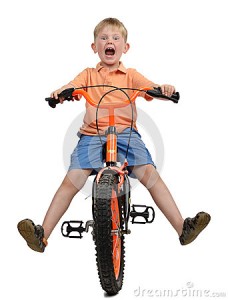Writing:
Outline:
How bike thief can be dangerous -> Intro: statistics and real thieves -> Reintroduction of cousin (stand-in thief) -> Personal Experience -> Cousins (transition) -> Satire Video of a robbery -> Closing remarks: stats and common sense -> Closing (cousins)
Transcript: *improv included in video*
Mateo:
Hello, are you scared of me?
Well you should be!
I’m one of the one million bike thieves who want your bike.
Im dangerous.
Matthew:
Over 1 million bikes are stolen annually.
About 5% are recovered annually.
With over 45% of bike thefts occurs during the nighttime, most victims do not have a chance to confront their bike thief or avoid doing so because they are usually armed and potentially dangerous.
Take Igor Kent. Wouldd you want to try to fight him?
Mateo:
What about me?
Matthew:
Last week i became another statistic in San Francisco. Having my bike stolen outside of Hayes Healy, I found myself questioning what would I do if i encountered the bike thief. Ironically, this weekend I was able to see an attempted bike theft on my way home.
Gaby & Mateo:
What would you do:
Video:
We always here statistics and news coverage around bike fatalities and crashes. However, we so rarely are reminded about the unsung danger of owning a bicycle. Nearly 12% of people are injured attempting to fight off a thief. Because you are in possession of a valuable whose vulnerability is so high, it si crucial that one takes the necessary precautions to ensure both your and your bikes safety.
This video is satire
Never approach a bike thief alone.
Audience:
The intended audience for S3 is decision makers. And because of that the ‘decision makers’ I’m hoping to reach out to, are bicyclist themselves and also those in charge of bike advocacy groups. Advocacy groups so often educate cyclist around bike safety and needed precautions. The classes they offer around these subject matters often overlook a certain safety measure that correlates with an ever-growing statistic – encountering a bike thief correlating with the rising number of bike thefts. Amongst advocacy groups they spree out rhetoric around self awareness, however only in terms of cars. However, when decision makers come upon bicycle expansion, they must factor in bicycle crime and the potential negative social and economical risk it brings. In no way am I insinuating that more bike usage directly leads to more crime, however, I do believe it can contribute to the vulnerability of a certain community.
Credibility:
The credibility is demonstrated in the video by my personal experience. An experience that allowed me to question myself and that I know exist amongst those beyond just the bicycle community. I attempt to reestablish my credibility by merging both fact and fiction – scenarios versus actual events and stats. In your attempt to convince others, it is beneficial to present them with situational humor to make your point more relatable in hopes that they will further explore your topic (presentation). Furthermore, Tseng and Fogg discuss how credibility and trust are not interchangeable. Because my video merges statistics, personal experience, and humor, it allows it to be more believable (credible). This then allows the audience to trust both my advice and information presented to them. Through my personal experience that led me to question myself, the “user understanding and user need for information” Tseng and Fogg mention, both become relevant.
Post Presentation Reflection & 2 commentaries:
I personally view my S3 presentation as a failure. For some failure is viewed and considered to a negative thing, however I perceive it as an attempt whose full potential was not showcased, but will on the next attempt. In creating my S3 presentations into a video, there were various components to me that were not necessarily foreign to me, but obstacles that I knew would delay or change the outcome. A desired outcome that was constructed in my mind, but not necessarily one that came into fruition. Not everyone has a ‘YouTube’ voice, and I knew going into it that I necessarily did not have it. However, I banked on the usage of visuals and cousins to captivate the audiences as I hoped it would. My cousins were used to add comedic relief and help tell a story that in video format can become boring for the audience. Now was it successful, I am not sure because I was not able to see my classmates’ reactions, however it definitely made me laugh and made this topic more appealing and captivating for myself.
I would also like to critic my video in terms of the prompt. I am not sure if I fully was able to answer the prompt in my video. I was not sure if this was due to my intended audience being so broad which added to the informality of the video, or the overall evidence presented.
For my S4 I will resort to the traditional format, because in terms of public speaking, I feel I’m able to offer more to my audience through that. Also, my level of effectiveness and efficiency seems to be more aligned with a traditional format.
Of the presentations I was able to see in class, Victoria’s seemed to be the most prompt-oriented and effective in terms of giving the audience information and reasons to abide by her demands.
Hey J –
I enjoyed your presentation. I’ve never heard of honeycomb tires until your presentation. Based on what you explained, they seemed the most logical wheel that everyone should be using.
Hey Victoria –
Great presentation. Really informative and I like how you transformed it into a proposition. It really embodied the prompt and made me agree with your position.





